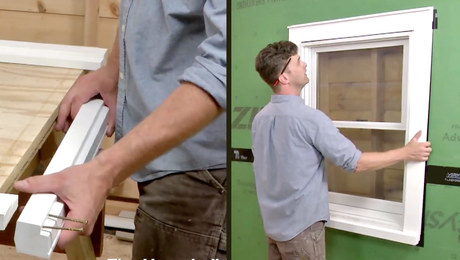Long story short, the master bedroom in my house (which is located at the front right corner of the home when you face the house) has a wood floor which slopes away from the corner of the house. The drop is approximately an inch moving diagonally away from the corner out into the hallway, a distance of about 20ft. The drop is more extreme between the wall and the center of the room. The floor is hardwood over plywood sub-flooring supported via joists which in-turn are supported by large beams that sit on top of cinder block piers. House was built in the late 50s/early 60s. I have already removed a bit of sag from the center of the bedroom by inserting an additional support beam under the joists; this runs down the middle of the room. What appears to me that happened is the rest of the house settled while the pier in this corner, and to a lesser extent, the piers directly next to the corner pier, did not.(Finding compacted clay in this area may explain that) So whats the question? Well I don’t know if the whole house really settled 1+ inches while this corner and some of the front wall did not, or whether its a combo of that and the house was built crooked, but is there anything I can do to eliminate this slope? Or is a drop that much actually considered acceptable and in no way affects much beyond leaning furniture? The ceiling also seems to follow this slope. The floor is thankfully mostly flat just not level. The structure of the house at the corner here sits on top of the main support beams that run along the outer walls under the floor joists, sill plate and all. Interestingly, the brick facade(real brick) shows little sign of having settled around the house and is in good condition. In relation, I have already inserted multiple support beams on top of piers under other areas of the house to correct sagging among other things. So I am not new to this. However, actually lowering a corner of the house by a bit less than an inch seems like it will be a bit more involved.
Discussion Forum
Discussion Forum
Up Next
Video Shorts
Featured Story

The Titan Impact X 440 offers great coverage with minimal overspray.
Featured Video
How to Install Exterior Window TrimRelated Stories
Highlights
Fine Homebuilding Magazine
- Home Group
- Antique Trader
- Arts & Crafts Homes
- Bank Note Reporter
- Cabin Life
- Cuisine at Home
- Fine Gardening
- Fine Woodworking
- Green Building Advisor
- Garden Gate
- Horticulture
- Keep Craft Alive
- Log Home Living
- Military Trader/Vehicles
- Numismatic News
- Numismaster
- Old Cars Weekly
- Old House Journal
- Period Homes
- Popular Woodworking
- Script
- ShopNotes
- Sports Collectors Digest
- Threads
- Timber Home Living
- Traditional Building
- Woodsmith
- World Coin News
- Writer's Digest


















Replies
To make it easier to read I
I think you need to check for level of the floor under the house to determine what is going on. I think that correcting the problem may induce more problems that you don't want to deal with. I'm not a pro, maybe someone more qualified will chime in later.
Your scenario is not unusual. However, it's not clear what can be done about it, short of lifting the rest of the house.
Structurally, it should not be a problem.
If the situation were reversed, that is the corner was sagging below the rest of the house the fix would be feasible. As it I expect you're correct that the rest of the house has sunk while the corner of the bedroom hasn't.
Is the house brick or stone? In that case the only option would be to jack up the rest of the house, foundations and piers, to the level of the bedroom corner. While that presents no construction problem it would be very costly and probably wouldn't make sense financially.
If the framing for your house sits on a knee wall you could jack up the framing a bit at a time, insert wedges between the framing and knee wall or piers and get it up where it's needed.